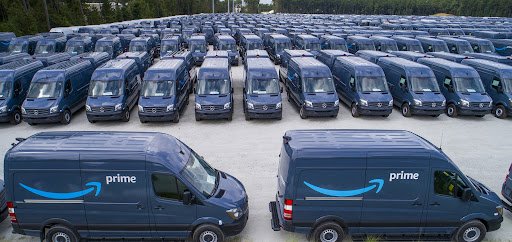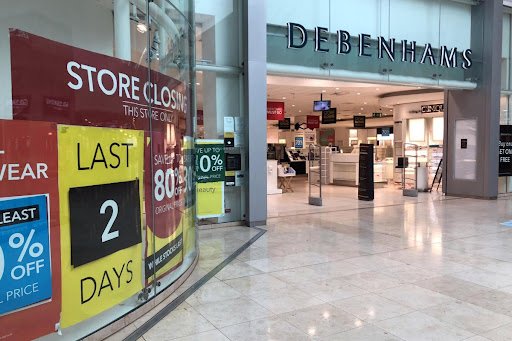“Home” is a concept that has undergone profound changes in the last two years.
Before Covid-19, the average working person spent 80% of their time away from home. During the successive lockdowns, that flipped on its head - with 80% of time being spent at home.
For many, that sudden inversion of social and work norms (and its unexpectedly long duration) led to a reassessment of entire ways of life.
“Working from home” has gone from a fringe concern to dead-centre of the mainstream, with many employers now struggling to get people back in their offices.
Some have taken matters even further, leading to a “Great Resignation” as previously settled employees look for new ways of living and working.
These trends are generating knock-on effects across hundreds of different sectors, perhaps none more so than retail.
Back in October 2021, we wrote about what the “New Normal” for retail brands might look like in the post-Covid era. But even since then so much has changed that it seems appropriate now, in June 2022, to revisit those predictions and adapt them for where things are today.
#1 Hybrid Working Is Here To Stay
The home office is now a permanent fixture of many people’s working lives. While it was a necessity during lockdowns, since the end of Covid restrictions, a growing percentage of the working population has shifted or is considering shifting to a hybrid model - sometimes working at home, sometimes travelling to work.
The Office For National Statistics has found that 24% of UK workers took a hybrid approach in April-May 2022.
And Microsoft’s latest Work Trends Index found that worldwide, 53% of employees were looking to go hybrid in the next 12 months - although with 50% of businesses planning to require full-time in-person work, this is emerging as a significant point of contention.
What does this tell us?
For us, it says that people want the best of both worlds: the social life and collaboration of the office, plus the convenience of home. Some, like Telefonica, are even experimenting with 4-day weeks. According to The Times, the first company in Spain to take up the idea of a 4 day week, Software Delsol, saw absenteeism fall by 30% and revenue rise by 20%.
And that is changing the face of retail.
#2 Homebodies Focused On Homewares And Home Improvement
Brands focused on the lifestyle of home and hybrid workers have been among the big winners of the last couple of years:
Wickes, Dunelm, Kingfisher (home of B&Q and Screwfix), Pets At Home, Homebase, Dobbies, Howdens, and other big, traditionally out-of-town chains have thrived.
Source: yourlocalguardian.co.uk
So have a host of smaller niche brands, like Pro Cook, Lick Paint, and too many others to mention.
Source: lick.com
There appear to be two factors that have divided the winners from the losers in this space:
Speed of adaptation: businesses like Wickes and Dunelm that pivoted fast to an online or click-and-collect model were able to seize market share from their slower rivals
Investment in customer research and brand strategy, meaning that a consistent, high quality, relevant experience could be delivered even through changes in format and new product ranges (see Homebase’s successful pivot from the “hard DIY” ethos)
Source: homebase.co.uk
Pinpointing and servicing the specific factors that are driving the home improvement market - the drive away from cities, home offices, better use of outdoor spaces etc - are all common to those brands that have been and will continue to be successful.
#3 I Want It Now - Delivery Services’ Challenge
Celebrating its 25th year since going public last month, it’s hard to overstate the impact that Amazon has had on retail.
But the biggest challenge it has thrown down in recent times has been the transformation of customer expectations around home delivery it has brought about - accelerated and brought into sharp relief by Covid forcing everyone to get used to eCommerce fast.
Source: amazon.com
Next-day and same-day delivery are table stakes for playing in this space now, rather than the innovation they once were.
Innovators are now:
Reducing order-to-delivery times to matters of minutes (for example, Gorillas.io)
Exploring the potential for deliveries to be part of the value-add customer experience (through “white glove” service, deliver-and-assemble/install, kerbside and contactless delivery, enhanced returns processes, etc)
Emphasising delivery options as differentiators. For example, DPD’s commitment to switch to all electric vehicles makes them appealing to environmentally-conscious shoppers
One big challenge here is maintaining consistent customer experiences when using crowdsourced, freelance drivers rather than a liveried fleet (like AO.com) or established third-party logistics businesses (FedEx, UPS, etc).
Source: ao.com
That matters, because customers are not prepared to accept bad delivery experiences. A May 2022 survey by Metapack found that:
70% UK consumers will be less likely to use a retailer again after a bad delivery experience
60% have shared those negative experiences with friends and family
22% have published online reviews after a single negative experience
#4 Please Come Back To The High Street!
The high street was in crisis long before Covid-19 brought it to its knees.
Well known brands that went into administration in 2020 and 2021 included Victoria's Secret UK, Jessops, Paperchase, Debenhams, the Arcadia Group, Edinburgh Woollen Mill, T M Lewin, Oasis, Warehouse, Cath Kidston, and many more.
Source: telegraphandargus.co.uk
While some have resurfaced under new ownership, most are gone for good.
While eCommerce has driven some of this and expanded to fill the gaps, online retailers have not been without high profile casualties as well: Missguided recently joined a list that includes Studio Retail, Big Home Shop, Physioroom, and others.
It’s not as simple as saying that people prefer eCommerce to in-person shopping.
What they now expect is the best of both worlds, and retail brands are having to rethink carefully what their stores are for:
Some brands are creating flagship concept stores as destinations in their own right - look at SportsDirect’s £10m Birmingham store, which includes an in-store putting green and basketball challenges; or the new Covent Garden Coca-Cola store, selling limited edition fashion collaborations and one-of-a-kind memorabilia promoted to its online fans.
Source: marketingweek.com
Omnichannel experiences, such as Zara’s Westfield Stratford “Store Mode" concept, which enables users to browse what’s in stock, book fitting rooms, buy and collect all via an app
Using retail space as a showroom for products is not a new concept, but it’s regaining ground as shoppers’ enthusiasm for seeing, feeling, and handling products before they buy (in-store or online) is being rekindled. The trend for out-of-town retailers - like IKEA - opening branches on the high streets has to be viewed in this context
Source: guardian.com
Shared brand spaces: more and more brands are teaming up to offer their products through partners’ outlets. Look at Asda and The Entertainer, Homebase and House Beautiful, Sainsbury and Dobbies
Successful brands will be the ones that manage to fuse the convenience of eCommerce with the experience of in-store retail.
#5 The Cost Of Living Crisis
The elephant in the room is the cost of living crisis. Prices are rising at a rate not seen for almost 40 years, and are expected to continue to soar for the rest of this year at least.
Source: parliament.uk
As a result, year-on-year retail sales fell by 1.1% in May, the second monthly drop in a row.
This poses a serious threat to many retailers - online and offline - who are still fragile after Covid. As shoppers become poorer and more price conscious, eCommerce’s ability to charge less will put it at an advantage.
Having said that, eCommerce has yet to confront the unsustainability of the race to deliver ever faster. Amazon may subsidise its same-day deliveries out of its enormous revenues, but investors are soon likely to stop pouring money into last-mile fulfilment businesses that have yet to show anything close to a profit.
What conclusions can we draw from all this?
Perhaps the most certain thing anyone can say is “more change is on the way”.
The whole of retail is undergoing some of the most rapid change in its history. Shopping habits have been reconfigured, and shops and e-stores that lack a reason to exist will cease to exist, particularly as demand contracts in the face of spiralling prices.
But not everything is being turned upside down.
Look more closely and you’ll soon see that the common thread that unites the retailers - offline, online, or (increasingly) hybrid - is a strong brand.
Understanding your audience, being where they want you to be, and being able to tell them a compelling story about yourself (in which they can see themselves reflected) is going to remain fundamental. The outward forms may change, and factors like price will of course become more and less important as the economic tides ebb and flow.
But a strong brand persists through all of this.
And if you’re looking for a partner to strengthen and enhance your brand, Mimo Brands has the experience, the track-record, and the wealth of talent you need. Talk to us now!











